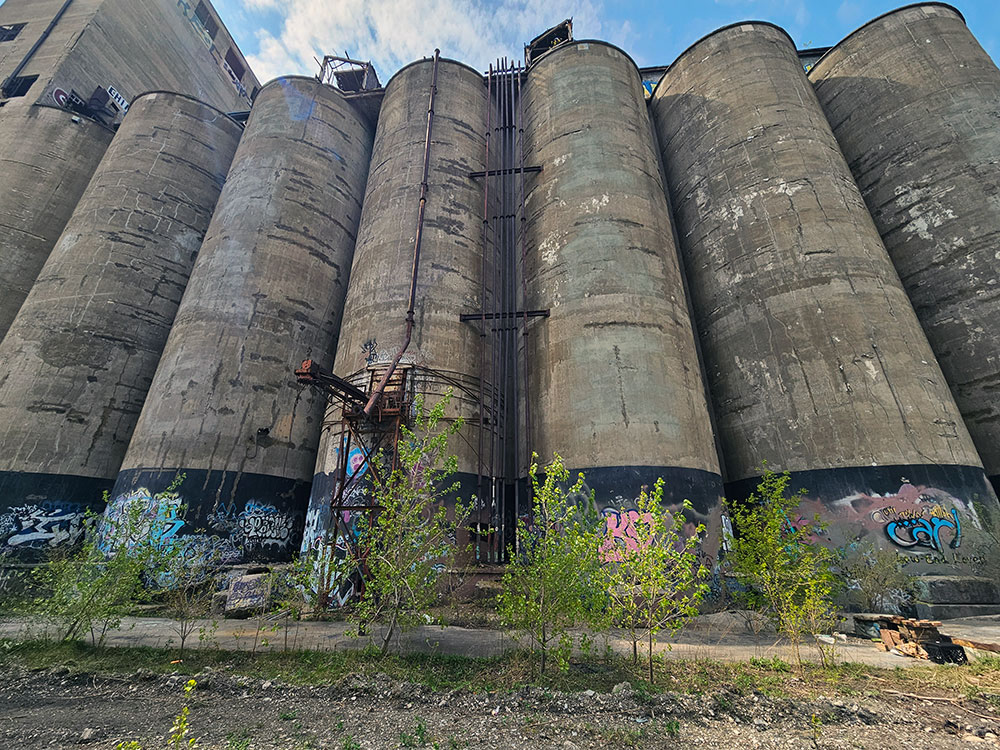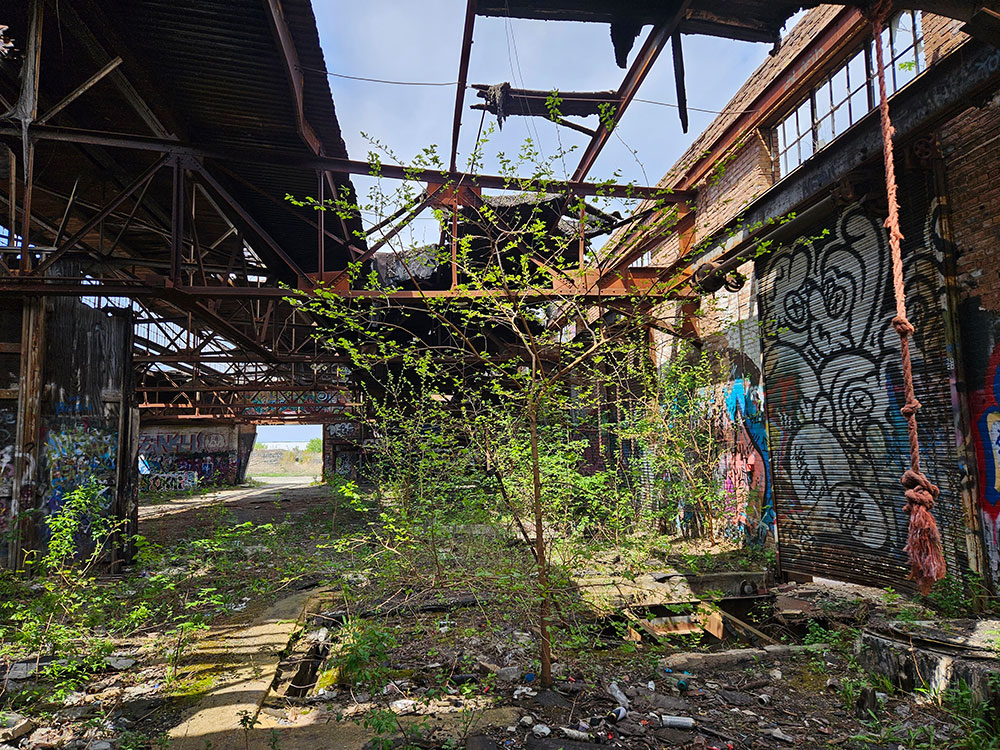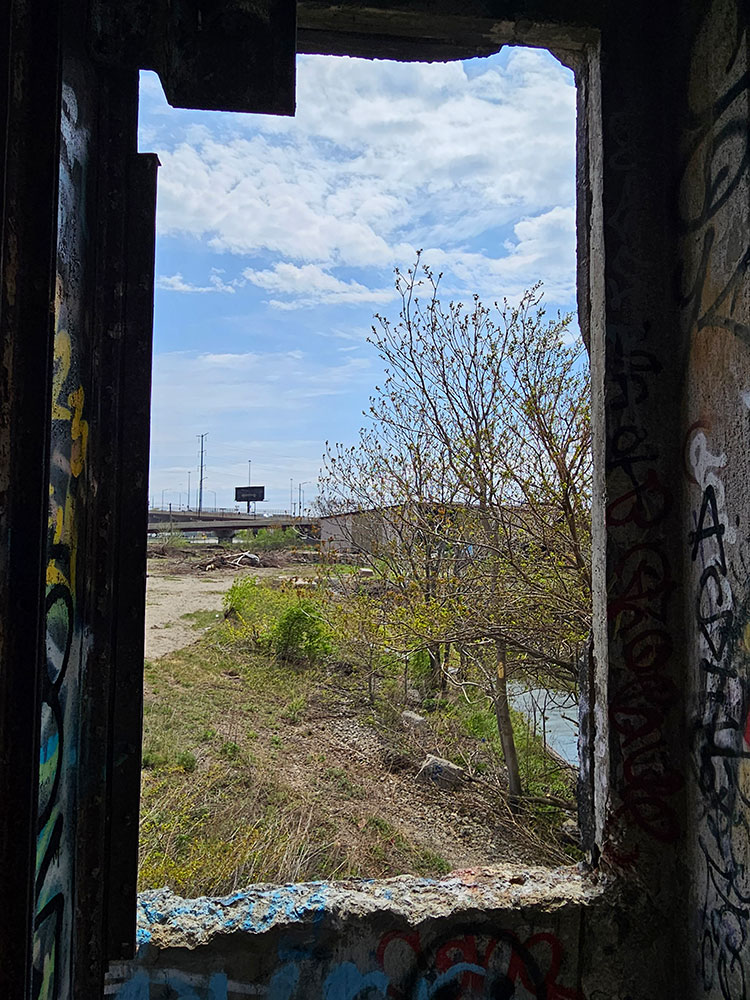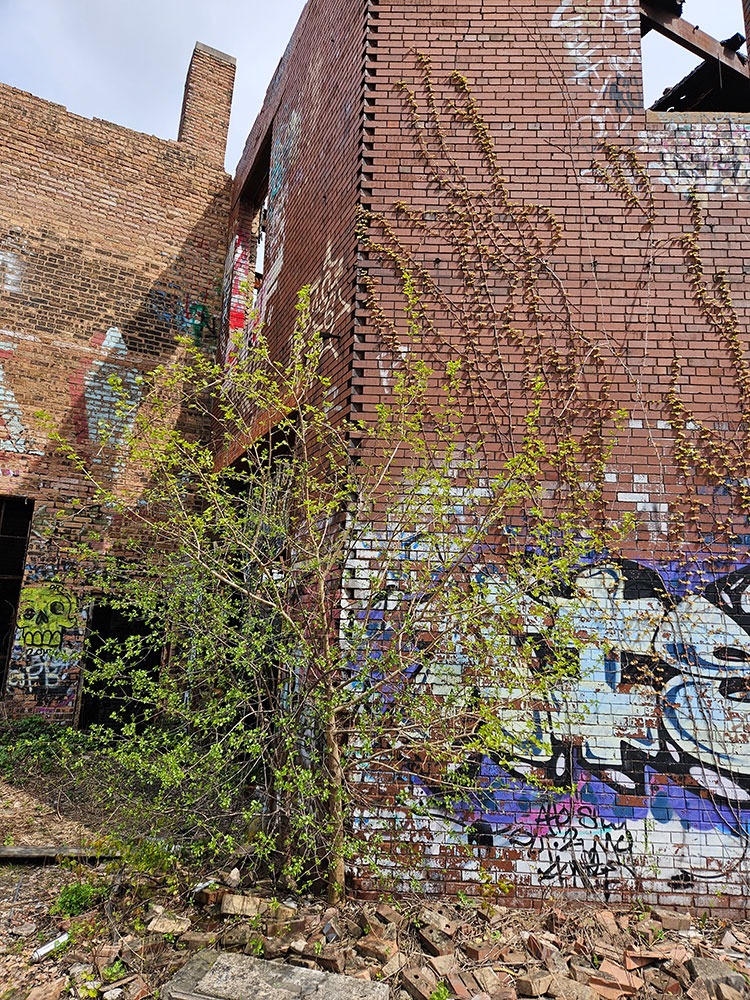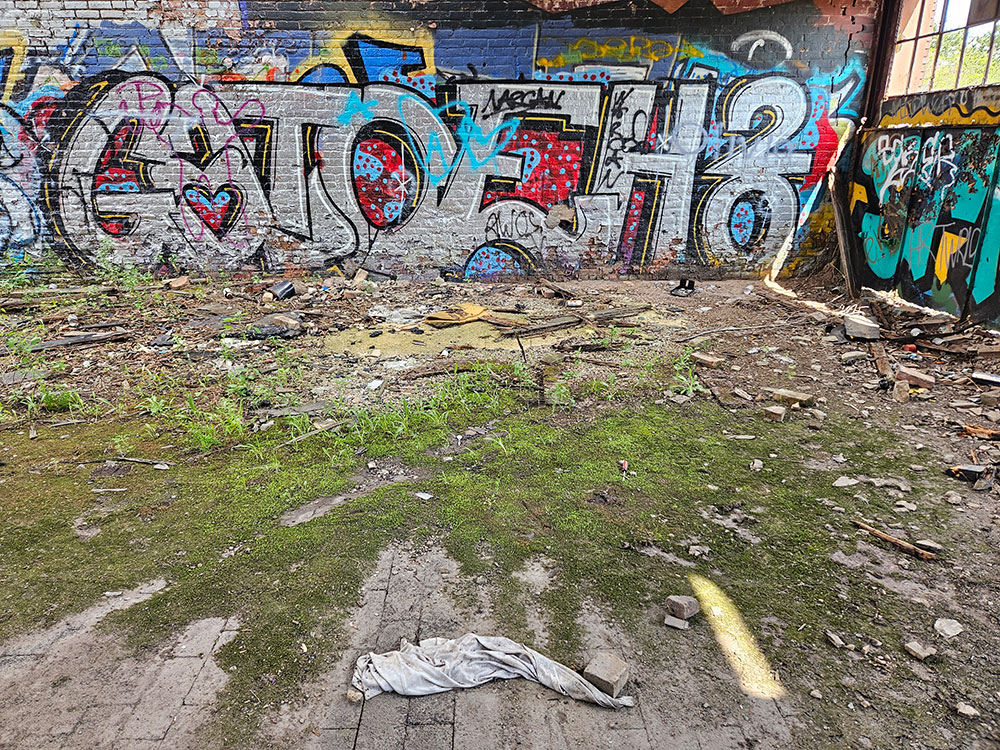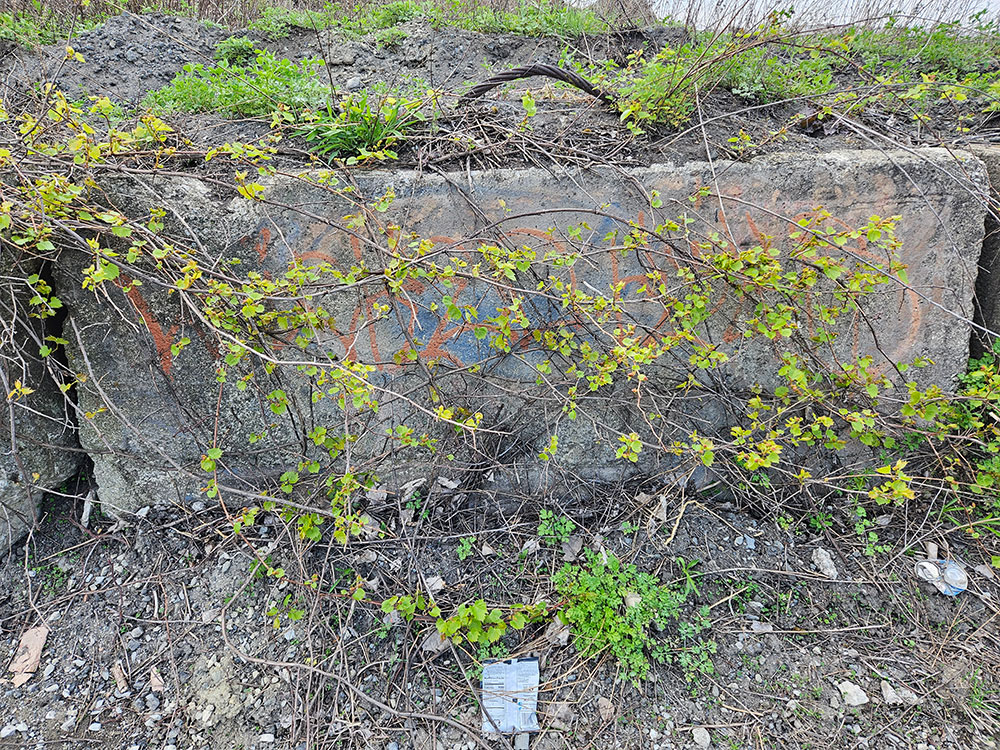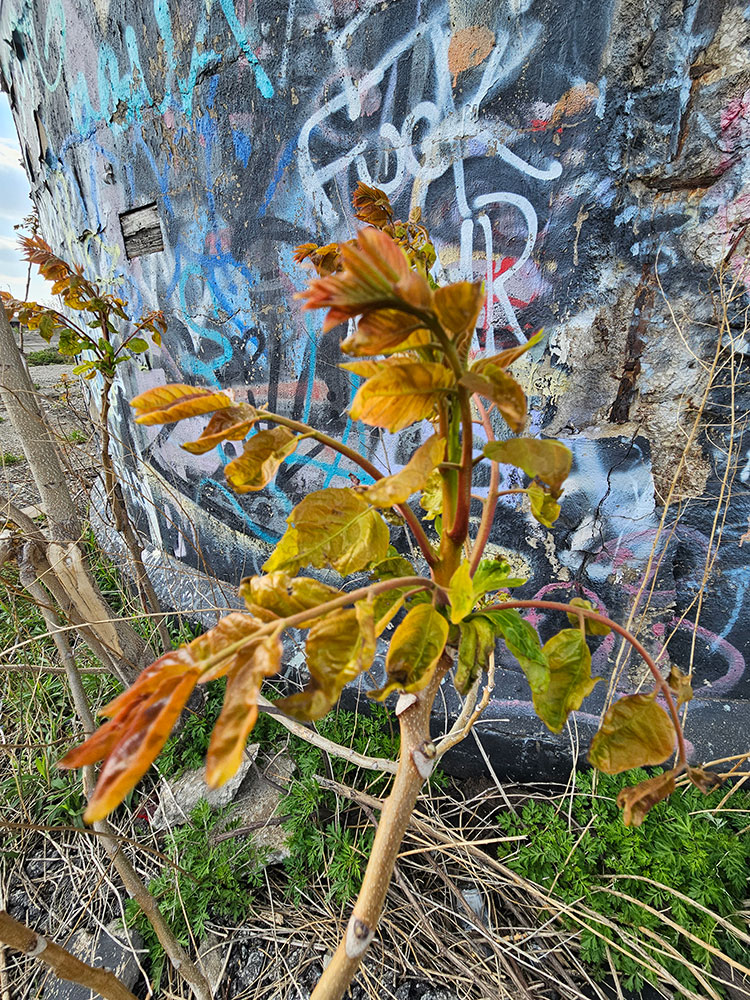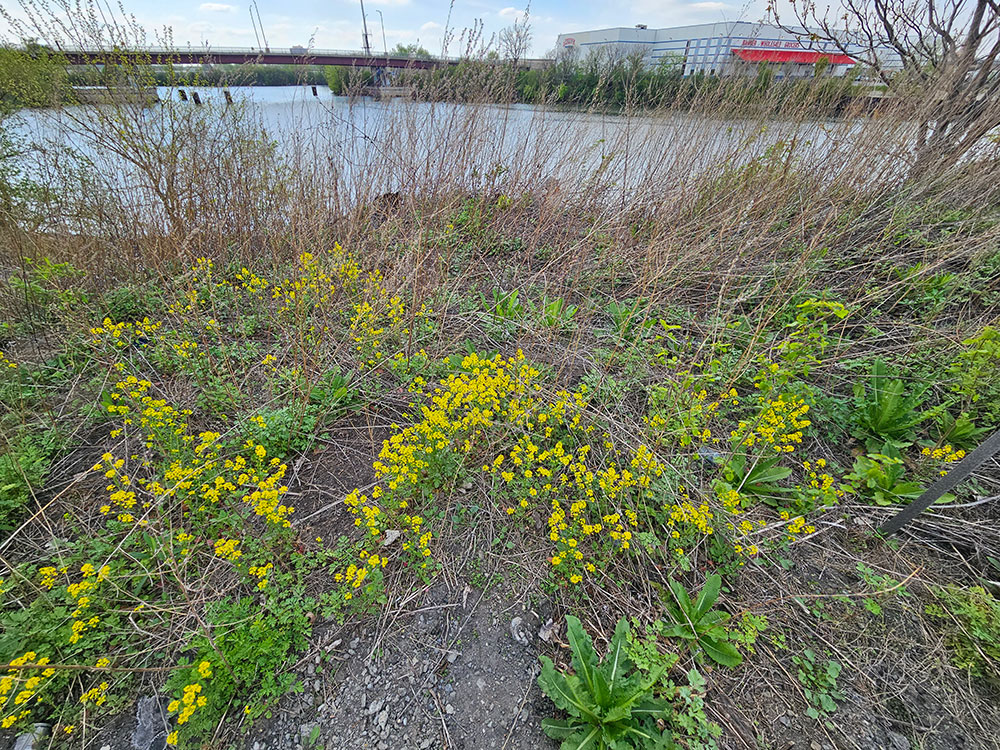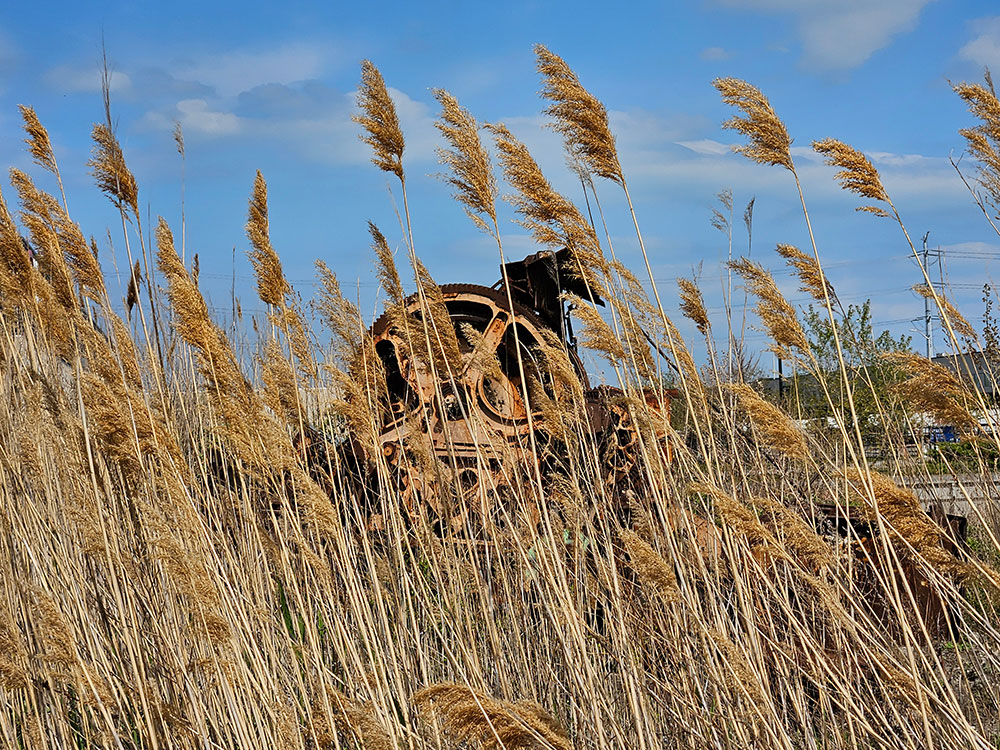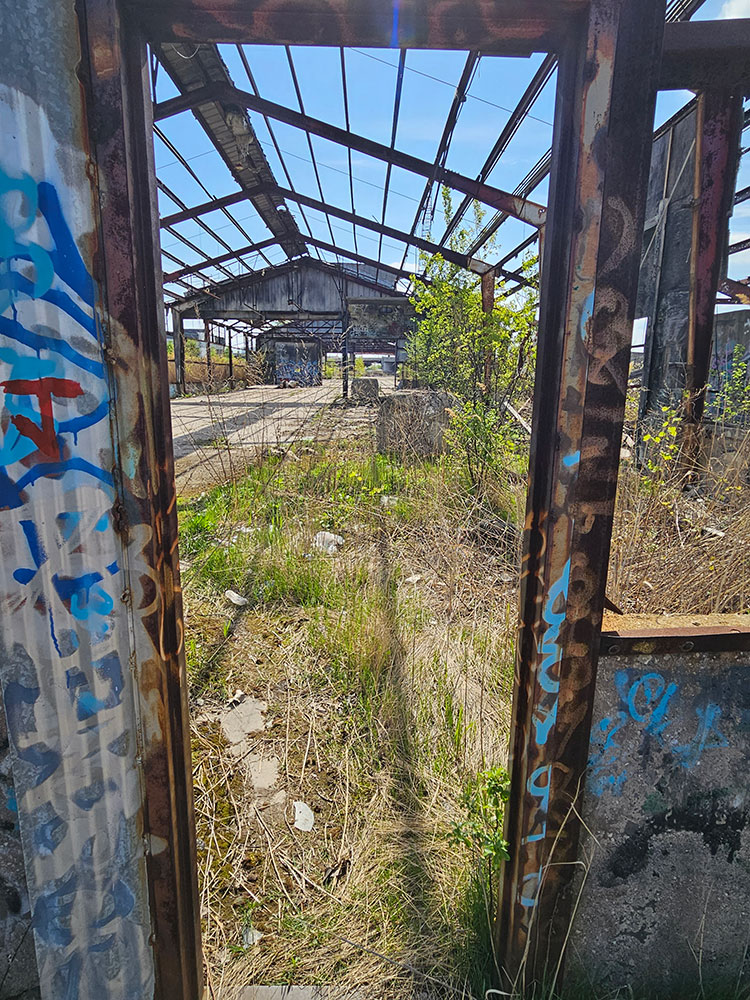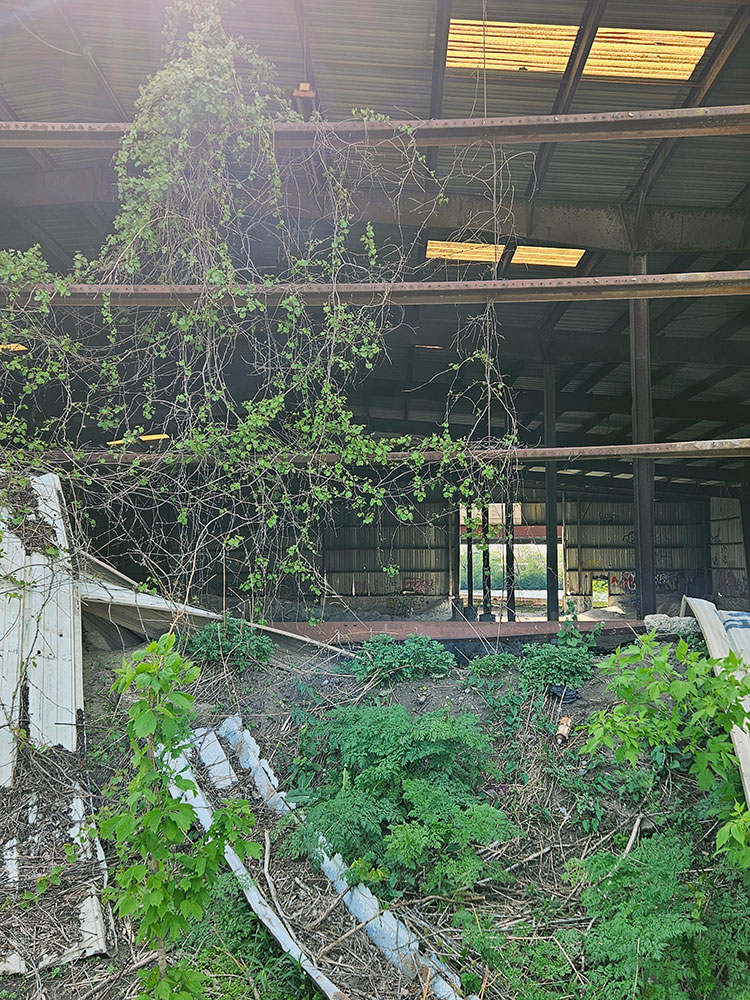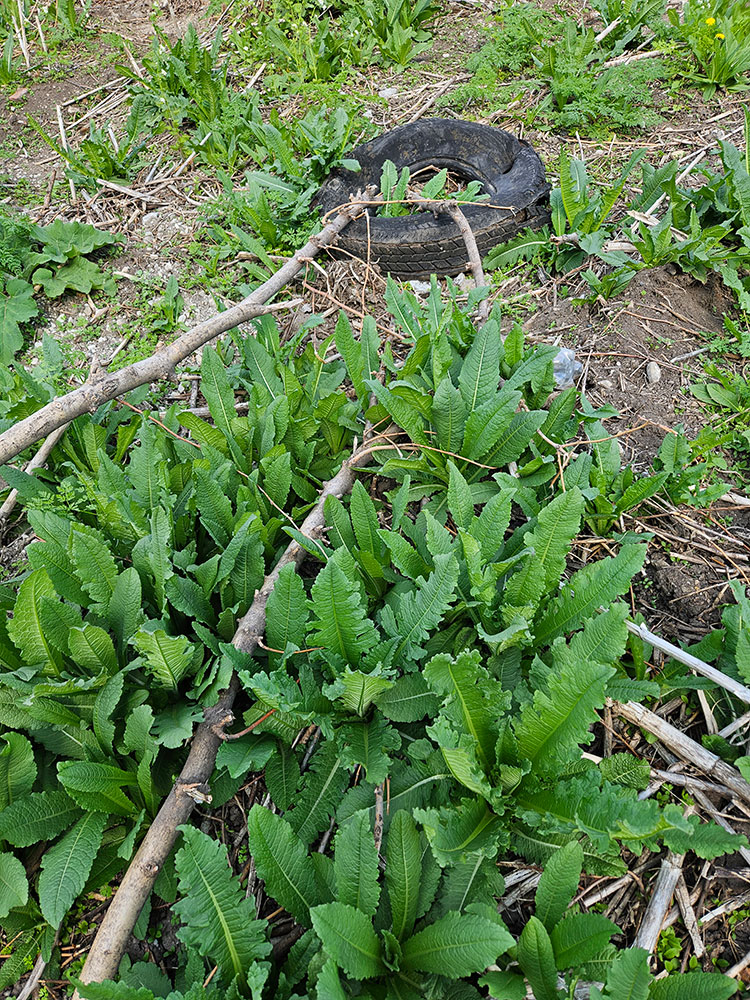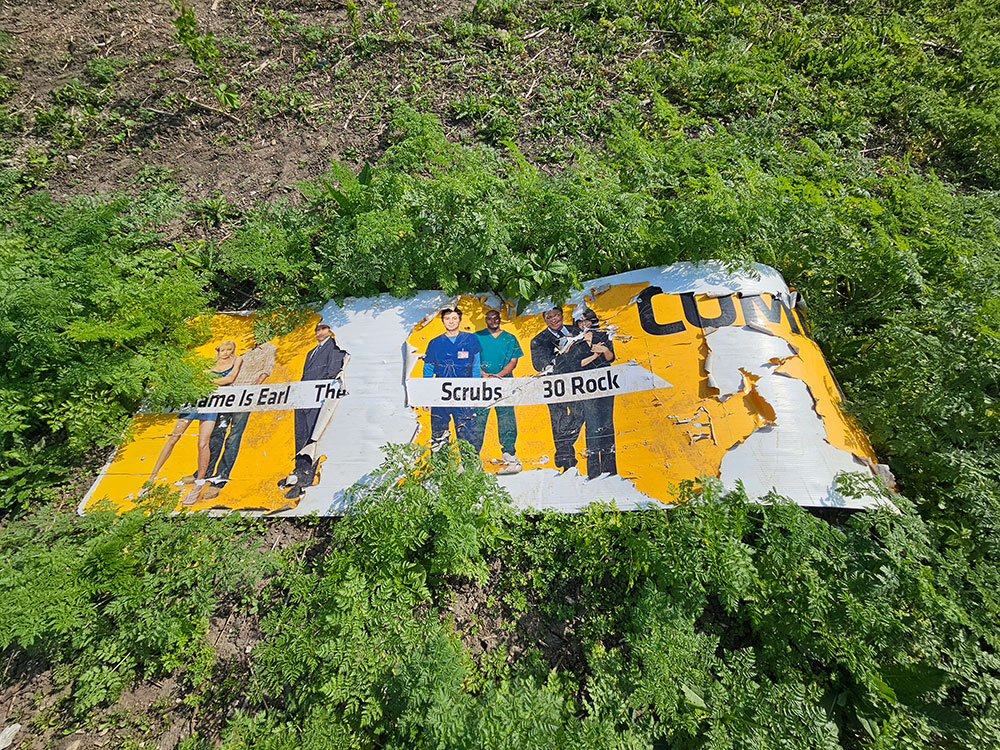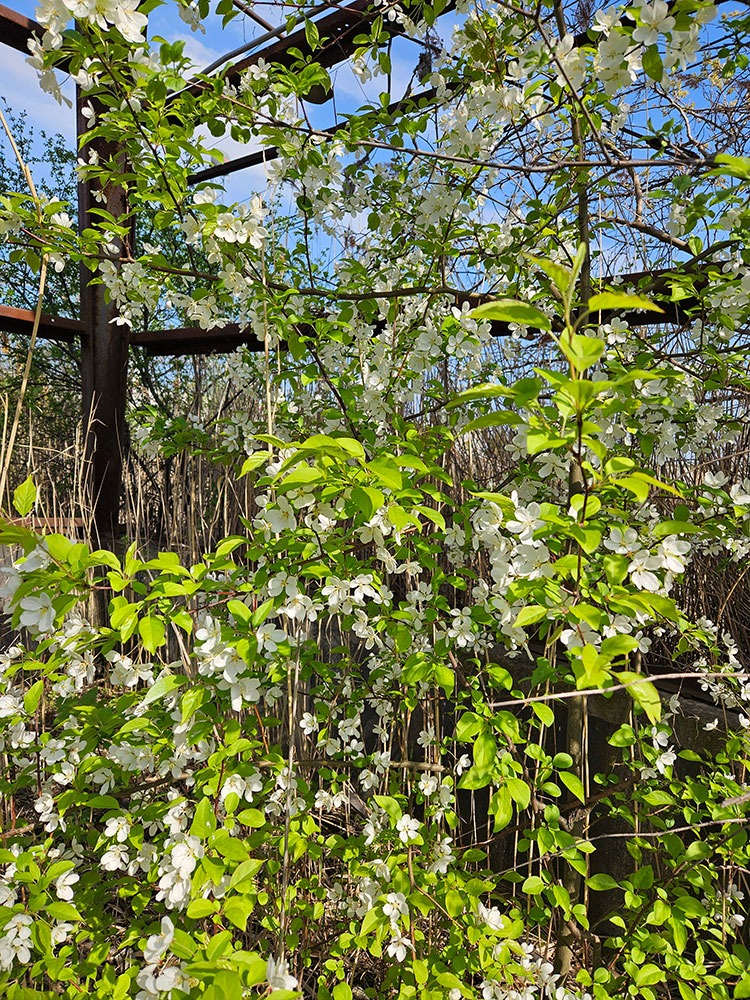When people move out, plants move in.
In 1977, a grain dust explosion damaged elevators in the Damen Grain Silos, on the south branch of the Chicago River in McKinley Park. The silos were too obsolete to repair, and too expensive to demolish, so they have stood unused for 46 years, collecting graffiti, visits from urban explorers — and the trees, weeds, and wildflowers that will form the vanguard of nature’s reclamation of the planet once humanity disappears. The derelict silos look like something out of the past, but they’re actually a preview of the future, of Life After People, as the History Channel series about a post-human world put it.
Slide through a hole in the fence surrounding the silos, and you’ll arrive first at an outbuilding with Boston ivy writhing up its bricks. Every pane of glass has been jaggedly broken, and half the roof stripped away. In the gloomy interior, the old concrete floor is a garden of nightshade, buckthorn and mugwort. An American elm struggles to rise and thicken in the dim sunlight.
None of these plants would be cultivated by gardeners. The National Audubon Society Field Guide to Wildflowers, Eastern Region, describes mugwort as “a weedy, invasive plant” whose habitat is “fields, roadsides, and waste spaces” — the latter a good description of the silos.
“Naturalized from Europe, this plant is difficult to eradicate,” writes the Guide; “it grows from stout, horizontal rhizomes that must be pulled or dug out if the plant is to be eliminated.”
Unwanted places are fertile grounds for unwanted plants. No one tends the silos, so mugwort runs riot. Civilization consists of controlling nature, but civilization has surrendered here.
In the pebbly expanse between the outbuildings and the silos, bur clover and goldenrod have taken root. Bur clover is “an invasive annual weed,” according to the Daily Gardener website. Riverbank grape crawls over concrete blocks close to the water. A few straggly trees with adolescent, underdeveloped limbs grow beside the silos: white mulberry, hackberry, peach-leaved willow, tree of heaven. Don’t be fooled by the tree of heaven’s angelic name: the Nature Conservancy calls it a “devilish invader” from China that “releases a strong, offensive smell” and “reproduces very quickly and aggressively inhibits (and can even kill) native plants near it.”
Deeper into the property, reeds obscure a rusted wheel; an old tire rests in a bed of cut-leaved teasel (Guide: “the common weedy teasel introduced from Europe”); yellow rocket displays a few yellow flowers among the greens and browns. Yellow is a beautiful wildflower that thrives in unsightly spaces: “cropland, fallow fields, vacant lots, construction sites, gardens, moist meadows, areas along roadsides and railroads, and waste areas,” according to Illinois Wildflowers. On the walk back toward the hole in the fence is a building reduced to its metal skeleton. Inside, if it can be said to have an inside, buckthorn and crab apple grow from the damp soil covering the concrete.
The state of Illinois recently sold the Damen Grain Silos and the 23 surrounding acres to developer Michael Tadin for $6.5 million. He plans to tear down the silos and “clean up the property,” according to the Sun-Times. That will mean rooting out the mugwort, the nightshade, the burdock, and the teasel. Someday, though, those plants will return. As the saying goes, “Mother Nature always bats last, and she always bats 1.000.”



